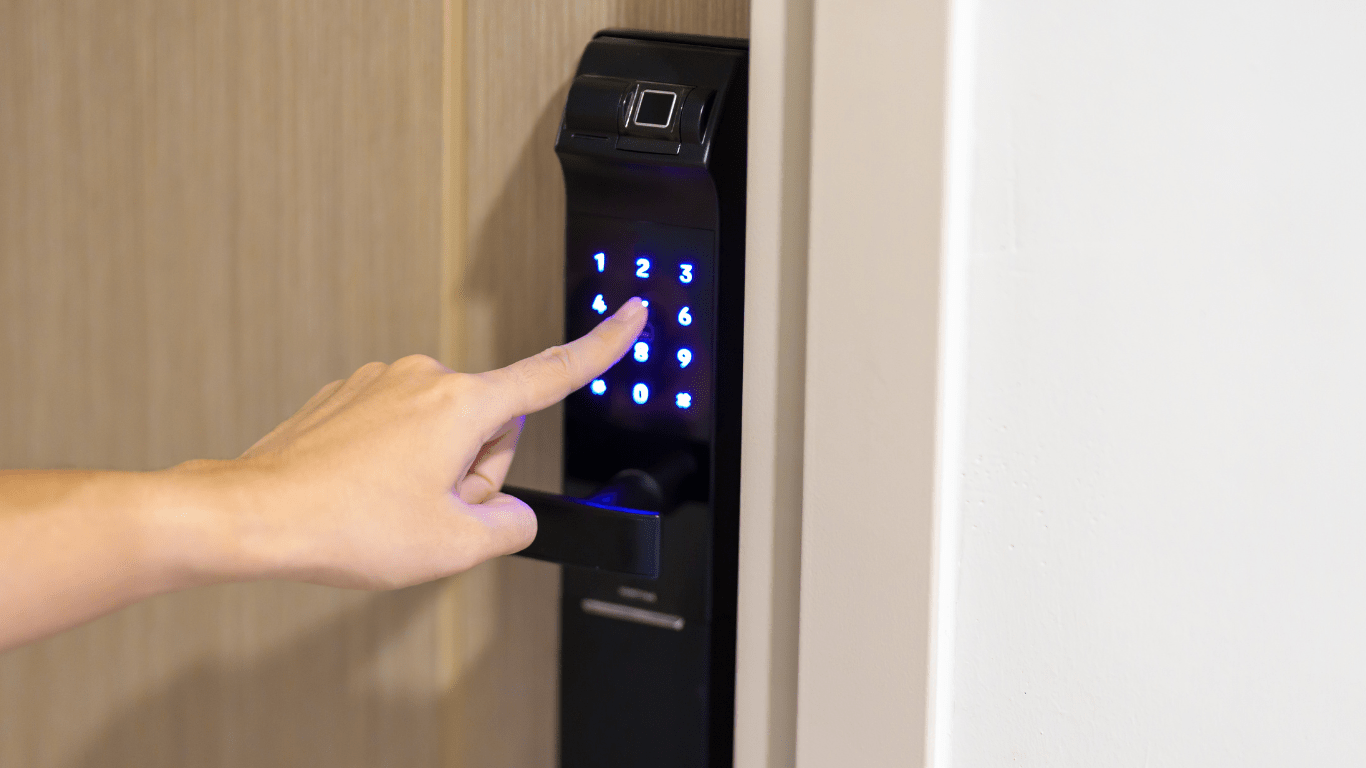Understanding Smart Home Technology
The Basics of Smart Home Integration
Entering the realm of smart home technology, I delve into the fundamental aspects that shape a connected living space.
Smart home integration involves linking various devices and appliances to a central hub for seamless control and automation.
This setup enables me to:
- regulate lighting
- adjust room temperature
- monitor security cameras
- even brew a cup of coffee with voice commands or a simple tap on my smartphone.
The key to smart home integration lies in the interoperability of devices, ensuring they communicate effectively to enhance comfort and convenience effortlessly.
The Benefits of a Connected Living Space
Transitioning to a connected living space brings a myriad of benefits that elevate my lifestyle.
By embracing smart home technology, I streamline daily tasks, saving time and effort while enjoying personalized experiences tailored to my preferences.
From energy efficiency to enhanced security features, the advantages are aplenty.
I can remotely control appliances, receive alerts on suspicious activities, and create schedules that align with my routine, creating a harmonious blend of comfort and convenience in my living environment.
Essential Smart Home Devices for a Modern Home
1. Smart Thermostats for Energy Efficiency
I’ll delve into the realm of smart thermostats, key devices for optimizing energy usage in a modern home.
These intuitive gadgets learn your preferences and adjust the temperature based on your habits.
By reducing unnecessary heating or cooling, smart thermostats can lead to substantial energy savings.
For instance, a smart thermostat like Nest Learning Thermostat can learn your schedule, adjust settings when you’re away, and even provide energy consumption reports.
Investing in a smart thermostat can not only enhance your comfort but also contribute to a greener lifestyle by minimizing energy wastage.
2. Smart Lighting Solutions for Ambiance and Security
Let’s shed light on the significance of smart lighting solutions in transforming the ambiance and security of your living space.
With smart light bulbs and switches, you can control the brightness, color, and scheduling of lights through your smartphone or voice commands.
Imagine seamlessly dimming the lights for a cozy movie night or remotely turning them on while you’re away to deter potential intruders.
Brands like Philips Hue offer a wide range of smart lighting products that can be integrated with other smart home devices for enhanced automation.
Embracing smart lighting not only elevates the aesthetic appeal of your home but also boosts its security measures.
3. Smart Security Systems for Peace of Mind
I’ll highlight the importance of smart security systems, playing a vital role in ensuring peace of mind for homeowners.
These comprehensive systems typically include cameras, motion sensors, and doorbell cameras that provide real-time surveillance and alerts on your smartphone.
Devices like :
- Ring Video
- Doorbell
- Arlo Pro Security Camera System
offer advanced features such as two-way audio communication and customizable motion zones.
By integrating smart security systems into your home, you can monitor activities, receive alerts for any suspicious movements, and even communicate with visitors remotely.
Enhancing your home with smart security systems not only fortifies your safety measures but also adds an additional layer of convenience to your daily life.
The Role of AI and Automation in Smart Homes
Personal Assistants and Voice Control
In smart homes, personal assistants like Amazon Alexa and Google Assistant play a crucial role in automation. These AI-powered tools help me control various smart devices with just my voice.
For example, I can ask Alexa to adjust the thermostat, turn off the lights, or even lock the doors—all without lifting a finger.
This level of convenience and hands-free operation enhances the overall living experience in my smart home.
Automated Cleaning and Maintenance Devices
Automation extends beyond just controlling lights and temperature in smart homes.
Automated cleaning devices such as robot vacuums and smart sprinkler systems are game-changers in household chores.
With a robot vacuum like the Roomba, I can schedule cleaning sessions or even command it to start cleaning using my smartphone.
Similarly, smart sprinkler systems adjust watering schedules based on weather forecasts, ensuring my garden stays healthy without any manual intervention.
These devices not only save me time but also make daily tasks more efficient and hassle-free in my smart living space.
Smart Home Tech for Entertainment and Leisure
Streaming Devices and Smart TVs
I’ll now delve into how streaming devices and smart TVs can elevate your entertainment experience within a smart home setup.
With streaming devices like Roku, Amazon Fire TV, and Apple TV, you can access a plethora of content from popular streaming services like Netflix, Hulu, and Amazon Prime Video at the touch of a button.
These devices connect to your TV, offering a wide range of entertainment options, from movies and TV shows to music and podcasts.
Smart TVs take this experience a step further by integrating streaming capabilities directly into the television set.
Brands like Samsung, LG, and Sony offer smart TVs with built-in Wi-Fi and pre-installed apps, allowing you to enjoy seamless entertainment without the need for additional devices.
Enhance your viewing experience with 4K resolution, HDR technology, and voice control features available in modern smart TVs.
By connecting your smart TV to your home network, you can also access and stream content from other smart devices in your home, creating a truly connected entertainment ecosystem.
Multi-Room Audio Systems for Music Lovers
For music enthusiasts, multi-room audio systems provide an immersive listening experience throughout your living space.
Brands like Sonos, Bose, and Yamaha offer wireless speaker systems that can be placed in different rooms, allowing you to play music individually in each room or synchronize the playback for a seamless audio experience across multiple areas.
Using your smartphone or voice commands with compatible personal assistants, you can control the music selection, volume, and playback settings in each room with ease.
Create custom playlists, set mood-based presets, and adjust the audio settings to suit your preferences, all from the convenience of your smart device.
Whether you’re hosting a party or simply relaxing at home, multi-room audio systems add a layer of sophistication and enjoyment to your daily routine.
Embrace the power of music and technology combined to curate the perfect ambiance in every corner of your smart home.
The Future of Smart Home Technology

Innovations on the Horizon
As I explore the future of smart home technology, I see exciting developments on the horizon. Advancements in artificial intelligence and machine learning are paving the way for even smarter homes.
Imagine homes that can learn your preferences, anticipate your needs, and adjust settings accordingly.
These innovations are not just convenient; they are reshaping the way we interact with our living spaces.
Companies are working on integrating augmented reality into home design processes, allowing users to visualize how smart home devices will look and function in their spaces before making any installations.
This forward-looking approach ensures that smart homes are not just functional but also aesthetically pleasing and seamlessly integrated into everyday life.
Smart Home Tech and Sustainability
In the realm of smart home technology, sustainability is a key focus area for future developments.
From energy-efficient appliances to solar-powered solutions, the emphasis is on reducing environmental impact while enhancing the overall living experience.
Smart thermostats that optimize energy usage, LED lighting that conserves electricity, and water-saving devices are just the beginning.
The integration of renewable energy sources like solar panels and wind turbines into smart home systems is becoming more prevalent, allowing homeowners to not only minimize their carbon footprint but also save on energy costs in the long run.
Sustainability is no longer a trend but a fundamental aspect of smart home design, ensuring that our living spaces are not only technologically advanced but also environmentally conscious.
Choosing the Right Smart Home Tech for Your Needs
Assessing Compatibility and Interconnectivity
When selecting smart home technology, it’s crucial to assess compatibility and interconnectivity among devices.
Ensuring that your devices work seamlessly together is key to maximizing the benefits of a smart home setup.
Before making any purchases, I always research the compatibility of each device with your existing systems.
It’s essential to check if the devices communicate effectively with each other and your home network.
This compatibility evaluation helps prevent issues related to connectivity and performance down the line.
Remember, a well-integrated smart home system can streamline your daily tasks and enhance overall convenience.
Planning Your Smart Home Tech Budget
Creating a budget for smart home technology is essential to avoid overspending and prioritize the devices that matter most to you.
When planning your budget, I recommend categorizing your smart home needs based on importance.
- Start by listing the must-have devices that will significantly improve your daily life, such as smart thermostats for energy savings or security cameras for home protection.
- Next, allocate funds to devices that enhance your comfort and convenience, like smart lighting solutions or automated cleaning devices.
- Lastly, consider allocating a portion of your budget to future upgrades or new technology releases to keep your smart home system up-to-date.
By planning your budget strategically, you can build a smart home that meets your needs without breaking the bank.
Installation and Setup Tips for Smart Home Devices
DIY Versus Professional Installation
When setting up smart home devices, I always consider whether to go the DIY route or opt for professional installation.
While a DIY approach can save money, it’s essential to assess my comfort level with technology and follow detailed instructions diligently.
On the other hand, professional installation offers expertise and ensures that devices are set up correctly for optimal performance.
I weigh the pros and cons based on my skills and the complexity of the installation process before making a decision.
Tips for Seamless Smart Home Integration
To achieve seamless integration of smart home devices, I prioritize compatibility and connectivity.
I verify that all devices I choose work harmoniously together to avoid any issues with functionality.
It’s crucial to plan and research beforehand, ensuring that each device is compatible with my existing smart home ecosystem.
Additionally,I organize my devices into groups based on their functions to streamline control and automation.
By following these tips, I guarantee a hassle-free experience and maximize the benefits of a fully integrated smart home system.
Challenges and Considerations
Privacy and Security Concerns
Ensuring privacy and security are critical aspects when implementing smart home technology.
It’s vital to safeguard personal data and prevent unauthorized access to devices.
I recommend researching devices with robust security features, such as encryption protocols and secure authentication methods. Regularly updating software and changing default passwords can also enhance security measures.
By prioritizing privacy and security, I can enjoy the benefits of smart home tech without compromising sensitive information.
The Learning Curve and Tech Support
Navigating the learning curve associated with smart home technology can be daunting initially.
It’s essential to familiarize myself with user manuals, online resources, and tutorials to understand device functionalities fully.
In case of uncertainties or technical issues, reaching out to reliable tech support services can provide invaluable assistance.
Whether troubleshooting connectivity issues or optimizing device settings, seeking expert guidance can streamline the integration process and optimize the performance of smart home devices.



